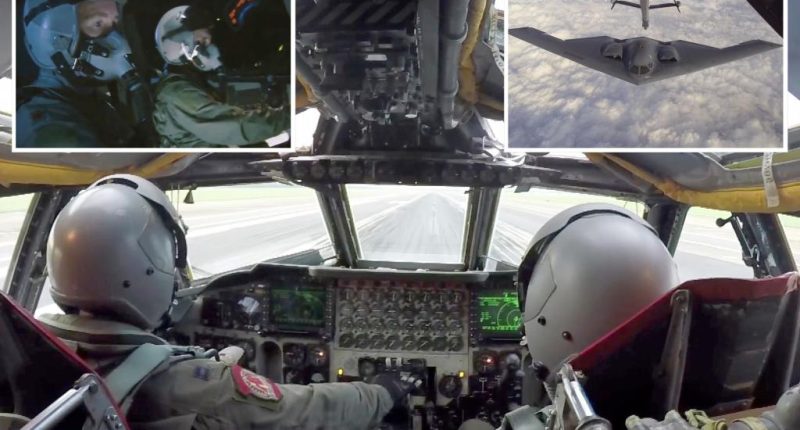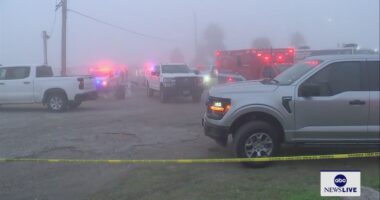Share this @internewscast.com

The B-2 stealth bombers that carried out the mission on the Fordow nuclear enrichment plant come equipped with conveniences such as toilets, microwaves, and typically a cooler for snacks. These features aim to make long flights more bearable for the pilots who endured the 37-hour journey from Missouri to Iran and back.
The sophisticated American bombers — initially developed for the purpose of deploying nuclear weapons against the Soviet Union — departed from Whiteman Air Force Base near Kansas City on Friday. They embarked on an 18-hour flight across the globe, incorporating several mid-air refueling stops, according to officials.
To ensure long missions are manageable, these state-of-the-art bombers include mini refrigerators and a microwave oven in the cockpit to keep the crew fed and alert during the journey.
And just like any plane equipped for long-haul flights, the B-2 Spirit has a toilet, too.
There’s also enough room for one pilot to lay down and rest while the other flies the batwing jet.
The B-2 first entered service 1997 and each one costs more than $2 billion; the US Air Force has a fleet of 19 — after losing one in a crash in 2008.
With a wingspan of 172 feet and a crew of just two pilots — the B-2 relies on automation to help complete long-haul flights.
The seven B-2 bombers deployed for operation “Midnight Hammer” flew in near complete radio silence, with their two-man crews taking turns to sleep during the tense night, The Telegraph reported.
The 37-hours spent to attack Fordow marked the longest B-2 bomber mission since the initial American assault on Afghanistan following the Sept. 11, 2001, terrorist attacks.
Pilots for these types of aircraft are trained to endure long, grueling flights, with past crews bringing cots aboard or even full camping pads, according to The Atlantic.
The stealth bombers did not spend the entire mission alone. A fleet of fighter jets and support aircraft deployed to meet up with the B-2s as they approached Iran.
“The B-2s linked up with escort and support aircraft in a complex, tightly timed maneuver requiring exact synchronization across multiple platforms in a narrow piece of airspace, all done with minimal communications,” Gen Daniel Caine, the chairman of the Joint Chiefs of Staff, touted in a statement.
The 25-minute operation inside Iran began on Saturday at 6:40 p.m. ET, with a lead B-2 bomber dropping two GBU-57 “bunker buster” munitions on the “first of several aim points at Fordow,” Caine said.
“The remaining bombers then hit their targets, as well, with a total of 14 MOPs (Massive Ordnance Penetrators) dropped against two nuclear target areas,” he added.
It marked the first time that the US used the massive, 15-ton GBU-57 bunker buster bombs in a military attack.
“There is not another military in the world that could have done this,” President Trump wrote on Truth Social when revealing the attack on Iran.

















